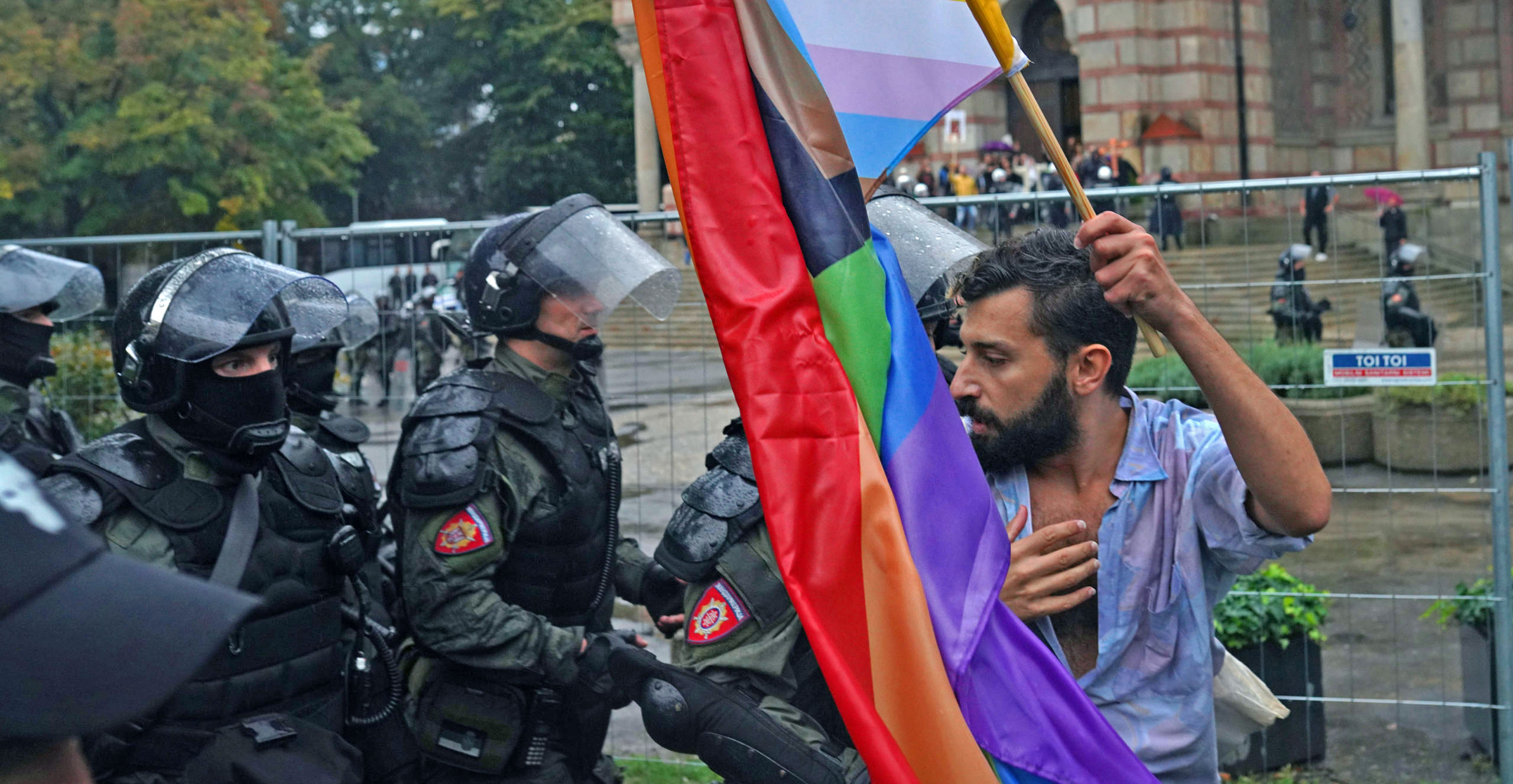Belgrade
The decision to cancel EuroPride in Belgrade last month didn’t settle the issue. Despite several months of wrangling and negotiation, it was clear that LGBT+ protesters would march in some capacity — and this is what they did. On Saturday afternoon, protesters gathered outside the Constitutional Court in an attempt to go forward with the planned march for gay rights, but they were not the only ones taking to the streets. Elsewhere, far-Right groups rallied in opposition, which resulted in 87 arrests and 13 injured police officers.
In light of this outcome, should the march have gone ahead at all? LGBT rights are a difficult issue in a country that is still deeply conservative. Even though Serbia’s Prime Minister Ana Brnabić is openly gay herself, few discuss it openly. Indeed, the EuroPride parade had to be cancelled last month after thousands poured onto the streets last August. Criticisms from the Serbian Orthodox Church verged on incitements to violence, with one bishop attacking “cursed” EuroPride organisers and participants, saying that it would “desecrate the city of Belgrade, the holy Serbian city,” before adding that “if I had a weapon, I would use it”.
In the weeks that followed, multiple anti-Pride events were organised — most notably, on 11th September, the Serbian Patriarch Porfirije organised a national prayer for the holiness of marriage, family, unity and peace among the Serbian people, an event attended by thousands of Serbs just outside the Temple of Saint Sava.
All these protests raised the stakes for the march when it did happen. Pride marchers were only allowed to meet outside the Constitutional Court and walk for 150 metres until they reached Tašmajdan stadium, but it took around 6000 police officers to ensure this could happen. It has been estimated that the total cost of the event was three million euros.
This has led many to question whether such marches help or hinder the cause of LGBT rights in Serbia. While it is true that the LGBT+ community is heavily discriminated against (they cannot get legally married; they cannot co-own a property; and they cannot inherit property or pension from their partner for example), these public displays of defiance may actually be hurting their cause. Violence is a regular feature at these events (like in 2010 where violence broke out across the city), and opposition to them is hardening, not softening — illustrated by multiple different protests organised in the last few weeks.
Despite nearly a decade of Pride marches in Serbia, there has been no real legislative impact and public opinion on the issue has not shifted. Instead, Serbia needs to find a new way to address the LGBT question. For instance, proper changes in the education system would be a good start, whereby younger generations could be exposed to LGBT ideas. Moreover, ensuring that LGBT+ voices are heard in mainstream media rather than only in run up to Pride events, may also be prudent. And of course normal challenging of those who maintain anti-gay views.
It is difficult to say whether any of these changes will actually occur, but it is better that they are handled in the classroom or the National Assembly than out on the streets.










Join the discussion
Join like minded readers that support our journalism by becoming a paid subscriber
To join the discussion in the comments, become a paid subscriber.
Join like minded readers that support our journalism, read unlimited articles and enjoy other subscriber-only benefits.
Subscribe